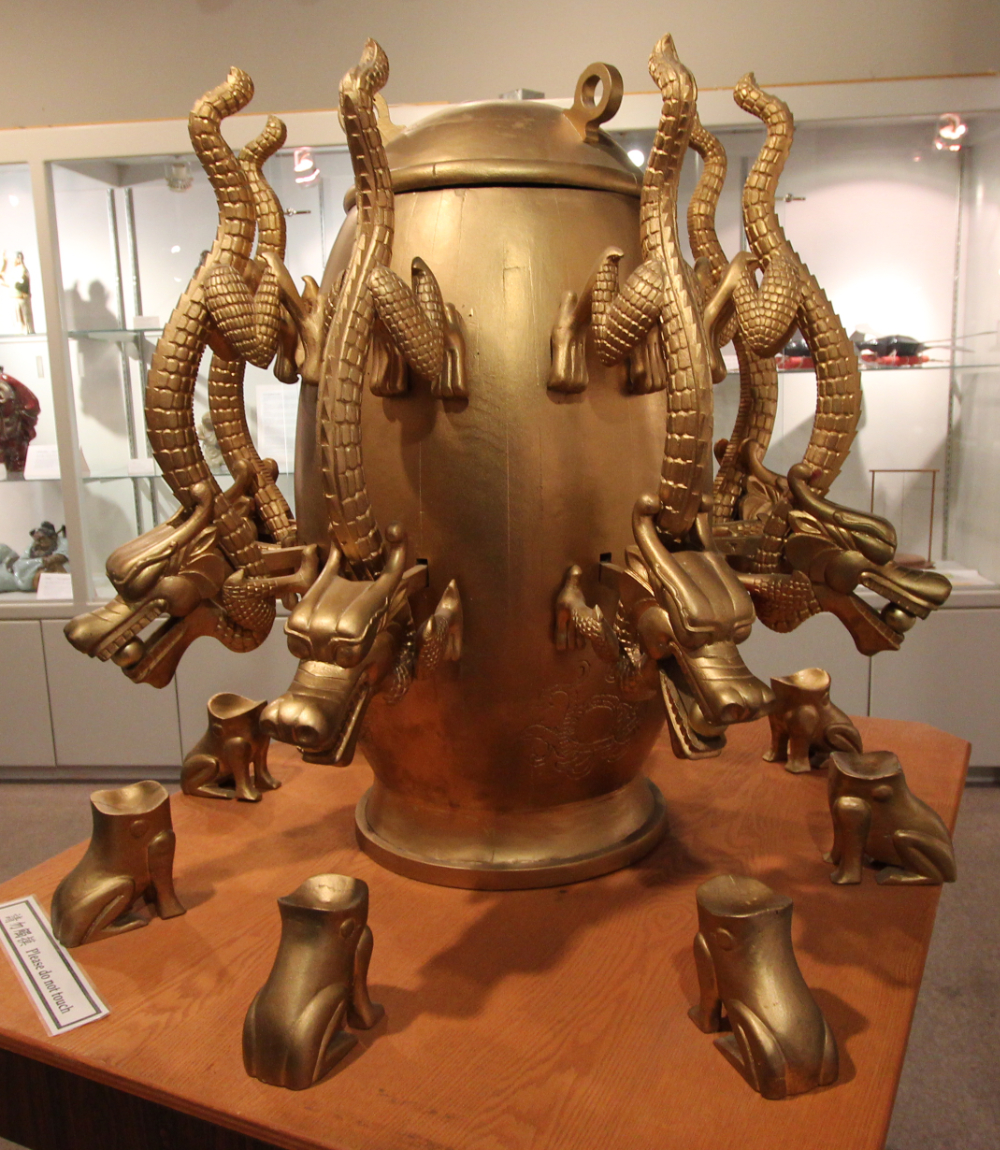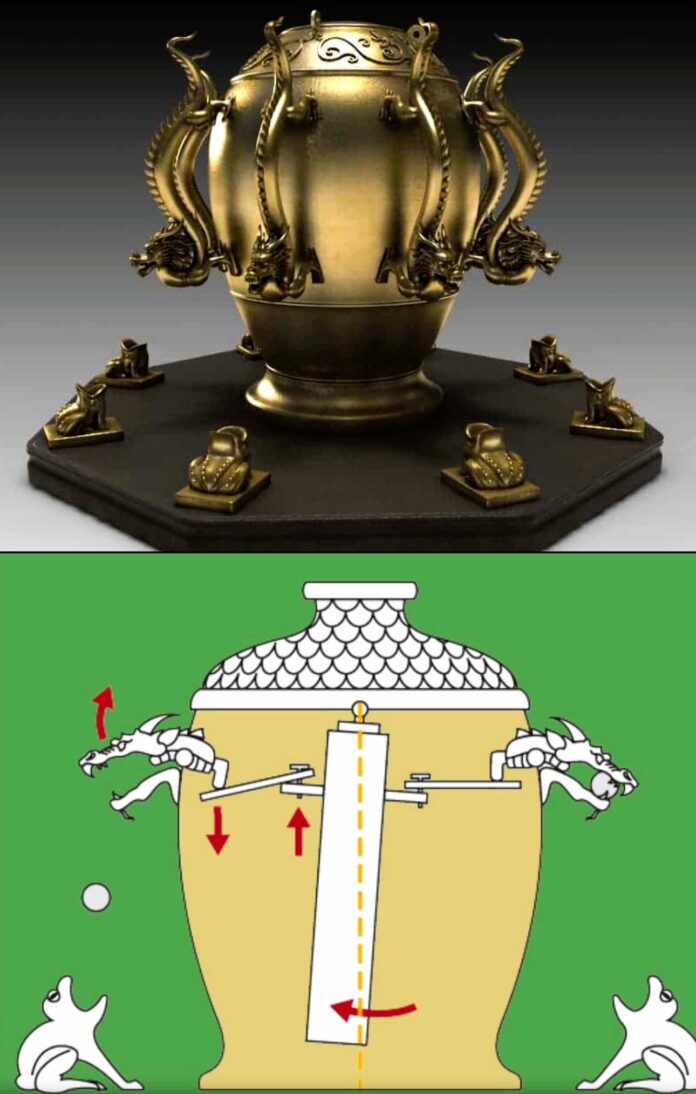In the annals of scientific history, few inventions have captivated the imagination of the ancient world as profoundly as the seismoscope crafted by the brilliant Chinese polymath Zhang Heng in 132 AD. This remarkable device, a testament to the ingenuity and engineering prowess of its creator, not only revolutionized the understanding of natural phenomena but also stood as a shining example of the profound intellectual achievements of ancient China.
The Enigmatic Design of the Seismoscope

Zhang Heng’s seismoscope was an elegantly designed bronze vessel, adorned with eight dragon heads, each clutching a bronze ball poised above the open mouth of a waiting frog. This intricate and captivating design concealed a remarkable secret within its form, one that would ultimately reshape the course of scientific history.
Initial Skepticism and the Turning Point
When Zhang Heng first unveiled his invention, it was met with skepticism and doubt from those who could not comprehend its capabilities. The seismoscope’s true nature was a mystery, and many were quick to dismiss it as a mere curiosity. However, the turning point came when the device detected an earthquake, and a ball dropped from one of the dragons, pointing west. Despite no immediate tremors felt locally, a few days later, messengers arrived with news of an earthquake in the west, proving Zhang Heng’s invention accurate and silencing his critics.
The Mechanism of the Seismoscope

The workings of the seismoscope were a marvel of ancient engineering. When the earth trembled, an unseen mechanism within the vessel was stirred, prompting one of the dragons to release its ball into the corresponding frog’s mouth. This act revealed the direction of the distant upheaval, guiding aid to where it was needed most. Zhang Heng’s invention, a blend of artistry and engineering, stood as a testament to the profound understanding of natural forces possessed by the scholars of ancient China.
The Legacy of Zhang Heng’s Seismoscope
The seismoscope’s impact on the scientific landscape of its time cannot be overstated. It represented a groundbreaking advancement in the field of earthquake detection, a feat that had previously been beyond the grasp of ancient civilizations. Zhang Heng’s invention not only demonstrated the depth of Chinese scientific and technological prowess but also paved the way for future developments in seismology and disaster response.
Conclusion
The enigmatic seismoscope of Zhang Heng stands as a timeless testament to the ingenuity and intellectual achievements of ancient China. This extraordinary device, with its captivating design and ingenious mechanism, not only revolutionized the understanding of natural phenomena but also captured the imagination of the ancient world. As we look back on this remarkable invention, we are reminded of the enduring power of human curiosity, innovation, and the unwavering pursuit of knowledge – qualities that have driven the advancement of science and technology throughout history.

